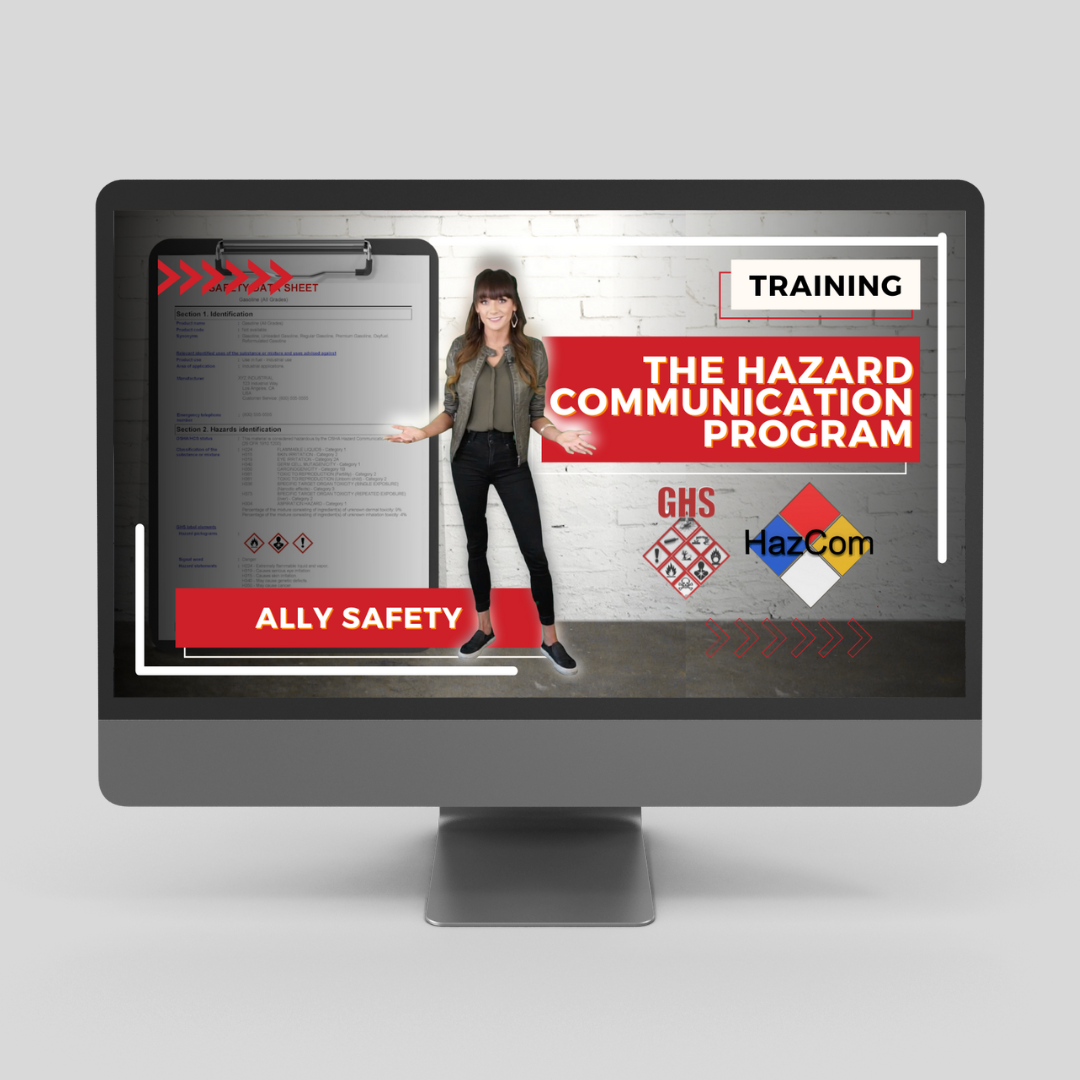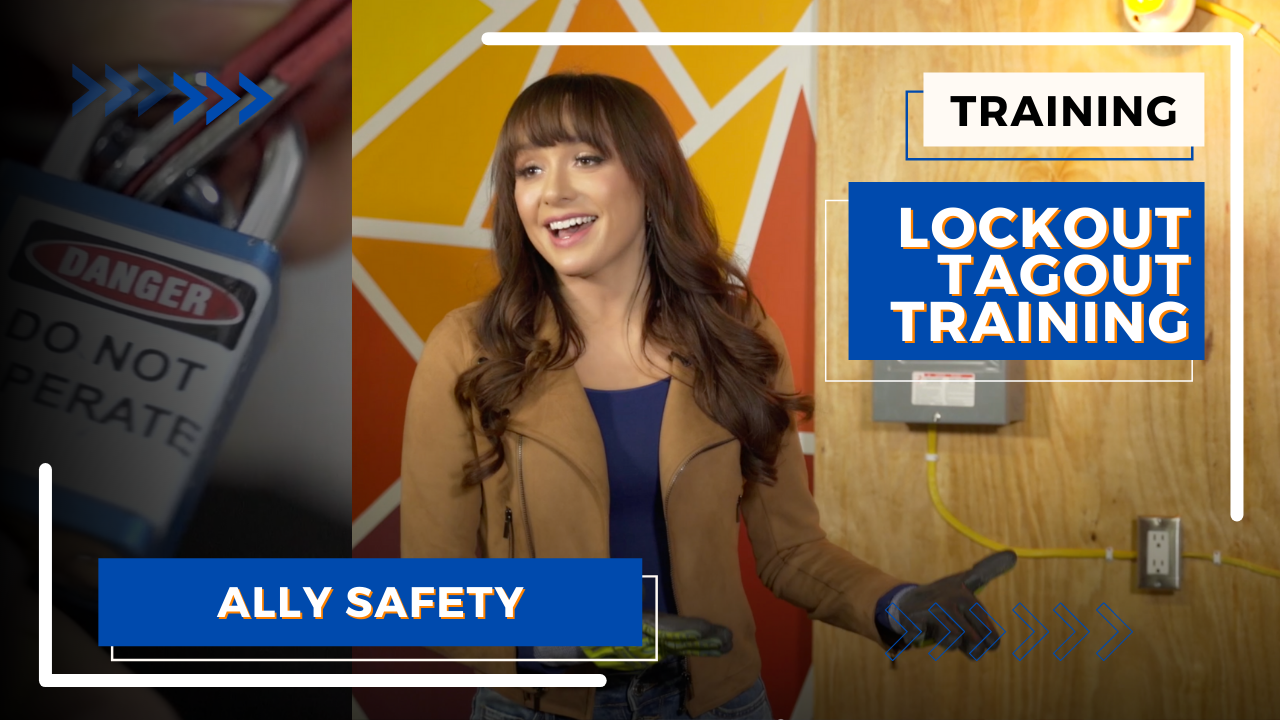In the area of workplace safety, understanding and following the Occupational Safety and Health Administration's (OSHA) hazard communication standard is important. This standard plays a vital role in ensuring that both employers and employees are aware of the potential hazards associated with chemicals and materials they may come across in their work environment. At Ally Safety, we are committed to providing top-notch training resources that align with OSHA requirements, helping organizations maintain a safe and informed workplace.
This guide will walk you through the basics of the OSHA hazard communication standard, explaining its history, key elements, and the importance of compliance. We will also explore effective training methods and examples of success, all aimed at enhancing workplace safety.
Understanding the OSHA Hazard Communication Standard
The OSHA hazard communication standard, often referred to as HazCom, is designed to ensure that information about chemical hazards and associated protective measures is shared with workers. This standard has changed a lot since its inception, reflecting the growing understanding of workplace safety needs.
Historically, the standard's development started in the early 1980s, with major revisions occurring over the years to enhance its effectiveness. For a detailed look at its evolution, you can refer to the historical context provided by OSHA itself at Hazard Communication | Occupational Safety and Health.
Compliance with the OSHA hazard communication standard is not just a regulatory requirement; it is important for protecting the health and safety of workers. When organizations adhere to these standards, they help prevent workplace injuries and illnesses, helping create a safer and more productive work environment.
Key Elements of the Hazard Communication Standard
The OSHA hazard communication standard is a key part of workplace safety, about clear communication about hazards. Understanding its key elements can help make work safer. Here are the main components:
- Safety Data Sheets (SDS): These sheets provide important information about chemical hazards, how to handle them, and emergency measures. Employees must have access to SDS to understand the risks associated with hazardous materials.
- Employee Training: Regular training ensures that employees are aware of potential hazards and know how to handle materials safely. It's important to communicate hazards well to stop accidents and injuries. For more information, check out our Hazard Communication Standard and GHS Toolbox Talk.
Following these rules is important. For more details, visit the OSHA Hazard Communication Overview.
Hazard Communication Labels and Training
Good labels and training help keep the workplace safe. Here's what you need to know:
-
Hazard Communication Labels: These labels are important for quickly identifying dangerous materials. They include essential elements such as:
- Pictograms: Visual symbols that convey specific information about the hazards.
- Signal Words: Words like "Danger" or "Warning" that indicate the severity of the hazard.
- Hazard Statements: Descriptions of the nature of the hazard and its potential effects.
- Precautionary Statements: Instructions on how to minimize or prevent adverse effects.
- Product Identifiers: Names or numbers used to identify the substance.
-
Training Best Practices: Conducting engaging and thorough training sessions is crucial. Consider these best practices:
- Use interactive methods to keep employees engaged.
- Incorporate real-life scenarios to enhance understanding.
- Regularly update training materials to reflect current standards and practices. For a quick start, refer to our Hazard Communication Program: A Quick Start Guide.
At Ally Safety, we are committed to providing effective training solutions that meet OSHA standards. Our modern methods ensure that employees not only comply but also understand the importance of hazard communication. Explore our offerings to enhance your workplace safety training.
Real-World Examples of Successful Implementation
Implementing the OSHA hazard communication standard effectively can significantly enhance workplace safety. Let's explore some real-world examples of companies that have successfully put these standards into practice:
- Company A: By integrating comprehensive hazard communication training, Company A reduced workplace incidents by 30% within a year. Their approach included regular training sessions and updated safety data sheets (SDS) for all employees.
- Company B: Implemented a robust labeling system that includes clear pictograms and hazard statements. This initiative not only improved safety but also boosted employee confidence in handling hazardous materials.
- Case Study Resource: For more insights, consider reviewing Integrating Hazard Mitigation Into Local Planning, which offers practical examples and inspiration for integrating safety standards effectively.
These examples show that with the right strategies and resources, companies can create a safer work environment while ensuring compliance with OSHA standards.
Enhancing Workplace Safety with Ally Safety Resources
Ally Safety is dedicated to providing a wide range of resources that help improve safety knowledge and compliance with the OSHA hazard communication standard. Here's how our offerings can support your safety initiatives:
- Toolbox Talk Video Membership: Gain access to over 130 short-form safety training videos. These engaging videos are designed to captivate and educate employees, making safety training both informative and enjoyable.
- Safety Training Courses: Our courses include microlearning modules on topics like Hazard Communication Standard Training. These courses are tailored to improve safety knowledge and ensure compliance. Learn more about our Hazard Communication Program.
- Downloadable Resources: Access printable toolbox talks, safety program templates, and other materials to support your safety initiatives.
- Safety Merchandise: Promote a culture of safety within your organization with our selection of safety-themed merchandise.
By leveraging Ally Safety's resources, you can enhance your workplace safety training and ensure your team is well-equipped to handle hazardous materials safely. For more information and access to our comprehensive safety resources, visit Ally Safety.
Summary and Next Steps
Understanding and complying with the OSHA hazard communication standard is crucial for maintaining a safe workplace. Key points covered in this guide include the importance of effective communication of hazards, the role of safety data sheets and labels, and the necessity of engaging employee training. By implementing these elements, companies can enhance safety and ensure compliance with regulations.
Ally Safety offers a range of resources to help you elevate your workplace safety training. From the Toolbox Talk Video Membership to comprehensive safety training courses, Ally Safety provides the tools needed to engage and educate employees effectively. We encourage you to explore these offerings to bolster your safety initiatives.
To learn more about how Ally Safety can support your safety goals, visit our website and discover the wealth of training resources available to you.
Conclusion
Enhancing workplace safety is a continuous journey, and with the right resources, it becomes an achievable goal. Ally Safety is committed to providing modern and effective training solutions that align with OSHA requirements, specifically designed for heavy industries. By leveraging our engaging video content, safety training courses, and downloadable resources, you can create a safer work environment that not only meets but exceeds regulatory standards.
For more information and to access our training resources, visit Ally Safety. Let's work together to promote a culture of safety in your organization.



Leave a comment
All comments are moderated before being published.
This site is protected by hCaptcha and the hCaptcha Privacy Policy and Terms of Service apply.